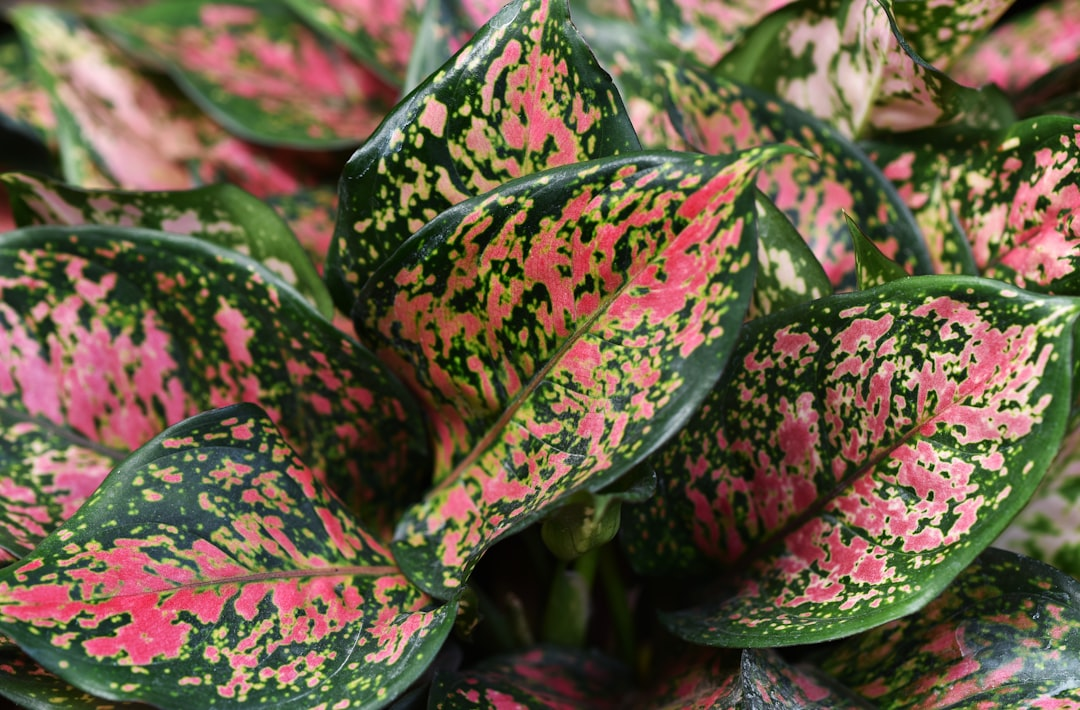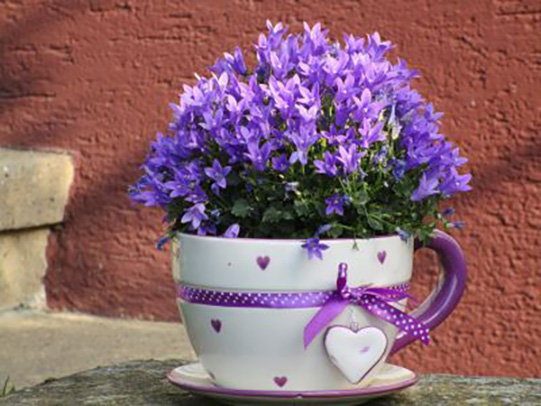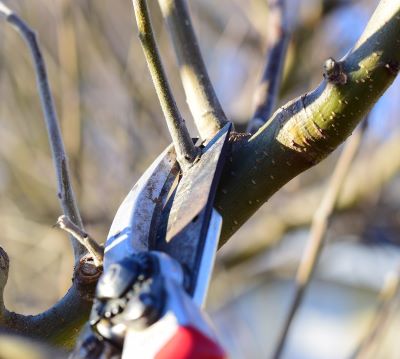
Pink Foliage Houseplants: Is Pink the New Green?
Best Pink-Foliaged Houseplants
Aglaonema (Chinese Evergreen):
- These can be green with varying amounts of pink--edging and/or speckles,and colored stems, or the reverse with the green being relegated to the stems, veins and rims on a pink base, depending on cultivar and lighting.
- Leaves can be broad ovate, lanceolate, or in-between, depending on variety.
- Bushy, clumping plants grow to about 3 feet by 3 feet at maturity, with a slower growth rate than many other house plants. Pink- and red-foliaged types will be slower still. This makes them good candidates for table plants in pots up to about 8 or 10 inches. You'll usually find the pink or red ones in a 5 or 6 inch pot.
- The shape and colors of our pure copper Sevda ribbed sphere planter will surely dress your plant to perfection when used as a cache pot.
- Bright, indirect light, but some early morning sun is ok. Keep above 65 degrees. Sensitive to even a brief period of temperatures less than 50.
- Water when the top 1-2 inches of potting medium is dry.
- Pruning is usually not necessary unless the plant is receiving insufficient light and becomes leggy. In that case, pruning back will be necessary to create a fuller plant.
Calathea (Peacock Plant)
- Usually very dark green (can appear black) with fine, pale pink stripes, edging, or large pink centers. Some have pink markings on a minty green center.
- Most pink-variegated varieties are bushy, upright growers with very glossy, thick, pointed oval or rounded leaves. Can have a somewhat stiff appearance.
- Height of potted plants usually no more than 18 inches. Rarely needs a pot larger than 9 to10 inches in diameter; most often sold in 4-6 inch pots.
- For a truly fabulous display plant several in a taller planter where they can't be missed--our tapered, cylindrical Aure planter has the perfect proportions.
- Not the easiest plant in the bunch, but worth it. Requires high humidity and best in bright, indirect light to retain color. Keep above 65 degrees and protect from cold drafts.
- Water when the top 1 to 2 inches of soil is dry and never let dry completely. Prefers to be moist, but not wet - "like a wrung-out sponge" is often the term applied. Use distilled water if your tap water has a lot of chlorine or fluoride.
- Non-toxic to pets according to the ASPCA
Philodendron 'Pink Princess'
- An Instagram favorite, with almost any pattern of pink markings on a dark green/brownish-red background, sometimes with white splashes as well.
- While they may look bushy in their 6" pot in the store, don't be fooled--"philodendron" should clue you in to their true vining nature. Giving them a mossed pole or other support will help them grow happily. Can grow up to 4' high with leaves as large as 9 inches long.
- Pop one into a cache pot like our gorgeous Arzu brass planter to really bring out the spectacular color.
- Occasional pruning can correct any legginess, but better to grow in enough light to prevent harder pruning and just tip prune lightly in spring.
- Any solid pink leaves should be pruned off--these contain no chlorophyll and will sap strength from the rest of the plant before they finally die on their own. Any solid green leaves should also be removed to prevent reversion to an all green plant.
- Bright, indirect light and some extra humidity will keep this royal lady happy.
- Water when dry about 1/2 way down.
- Keep above 60 degrees.
Ficus 'Ruby' (Variegated Rubber Plant)
- Large, wide oval leaves up to 1 foot long have heavily textured veins in soft green and cream with a pink to red flush on the edges and red center vein.
- Upright habit. Can be grown as a standard tree form 6 feet+, or more bushy with appropriate pruning. Normally found in 4 to 10 inch pots.
- We think our uniquely shaped Ares fiberstone pot would show off larger plants beautifully, and our Sevda planter in Copper Green will really highlight the color if you need a tabletop size.
- Medium to bright, indirect light.
- Water when top 1/3 of soil is dry. Splashing foliage when watering can cause spotting.
- Keep above 60 degrees.
- While less fussy than many other Ficus (fiddle-leaf fig, weeping types) it is STILL a ficus. Accordingly, do not make sudden changes in environment or culture. Old lower leaves will eventually yellow and drop, so it may become more bare at the base with time.
Stromanthe 'Triostar'
- Large, glossy, oblong leaves are patterned following the veins with shades of green, cream, pink, and burgundy with pink undersides.
- Leaves arise on long pink petioles from creeping stems.
- Height in a container usually about 18 inches. Generally retailed in 6 inch or 1 gallon pots but sometimes in 10 inch pots as a summer tropical or in those areas where it overwinters (zone 9 southward).
- A low bowl-shaped planter such as our Pan planter will set this off to advantage and give it the room it needs for sideways expansion.
- Like the calathea and maranta (prayer plant) to which this is related, it is able to move its leaves during the day to orient them toward or away from the sun, until folding them up at night.
- Bright, indirect light brings out best color indoors, but can be acclimated to shade or full sun outdoors in summer. This is an excellent plant for mixed containers outside, especially with impatiens and ferns.
- Water when top 1 to 2 inches of soil is dry and never let dry out.
- Can tolerate outdoor temperatures down to 40, but keep above 60 degrees inside.
- Reportedly non-toxic to pets
Syngonium (Arrowhead Plant)
- These have, obvioulsy, arrowhead shaped leaves that can look quite smooth, somewhat textured, or even crinkly. Pink varieties are numerous, ranging from solid dusty pink to light green mottled with pink or green shades with a slight pink flush and pink veins. All depends on the cultivar and lighting.
- Habit is actually vining although they may appear as a thick clump on purchase. They can be kept bushier if any elongated stems are pruned back--in this fashion they are reminiscent of a small caladium.
- Usually found in a 4" pot or smaller--'Neon Robusta' or one of the 'Illusion' series most common at retail.
- Our Terra planter is the perfect foil for these, whether you want to plant directly or use as a cache pot.
- Plenty of unusual and colorful cultivars to be had online--for a price. (I'm still thinking about 'Milk Confetti'--I may be in love).
- Bright, indirect light is necessary for best color. Direct sun may cause leaves to fade or burn.
- Water when soil is dry about one inch down.
- Keep above 60 degrees
- These are wonderful for outdoor summer containers that are too shady for sweet potato vine, although they're not that vigorous by comparison.
- In parts of the country these are invasive (e.g. Florida) so only grow inside in those areas. Outside they may climb trees and be very difficult to remove in such areas.
Neoregelia
- An epiphytic plant, this bromeliad does not grow in soil in nature. Its roots are primarily used for stabilization and it feeds through nutrients caught in a cup in the central part of the plant. Therefore, be sure that it is potted in a very well-draining mix. They may also be mounted on driftwood, boards, or mossed poles as is often done with staghorn ferns and other bromeliads.
- Thick, stiff, strappy green leaves grow in a wide, low rosette around a central well, from which grows a very short flowering bract. The center of the plant usually colors up as it gets closer to blooming, but some also have white linear variegation or dark green to reddish spotty banding or may be tipped in pink as well.
- Many different shades of pink to red can be found. Neos are usually grown for retail in 6 inch pots.
- The organic texture of our fiberstone Indra pot is a perfect modern blend with this architectural plant.
- Note that these plants will only live about 2-5 years--once they start to bloom they are technically starting to die, so you should look for one where the flowering "cone" is still low in the well and green, rather than already showing the small pink or blue flowers.
- New plants, called "pups" will form at the base of the mother plant before it dies. These can be separated once they are one third to one half the size of the mother plant and show some aerial roots.
- Because of the unique nature of this plant and other commonly grown bromeliads, they can tolerate low light for extended periods of time and rarely need to be fertilized. By the time you purchase one they have very few requirements, unless you wish to grow the pups for future generations. Roughly speaking, retail grown varieties will look good for about another 6 to 8 months after purchase.
- Best color will be maintained with bright, indirect light.
- There are many variations in watering practices, but the most simple is to water into the central well and let it run into the soil once the potting mix is about 1/2 to 2/3 dry. Keep the well filled about 1/4 full. Every couple of weeks empty out and flush the well so that nasty stuff does not accumulate and cause problems. Adjustments should be made according to the time of year and the amount of light the plant receives.
- Plants can be misted 2-3 times a week if the humidity is low.
- Keep above 65 degrees; a 10 degree drop in nighttime temps is beneficial
- Non-toxic to dogs and cats, according to the ASPCA

More Pink Plants to Try
- Rex Begonia - with patterns of pink, silver, green, burgundy
- Hypoestes (Polka Dot Plant) - pink with green spots, common annual plant
- Ludisia discolor (Jewel Orchid) - almost black with pale pink veins, terrestrial
- Tradescantia/Setcresea - fleshy purple leaves or linerarly striped with purple, pink, or silver; eventually trailing even if not when purchased, best in hanging baskets. There are a few clumping types found in commerce, however.
- Callesia repens - small pale pink and light green striped leaves; trailing, best in hanging baskets
- Fittonia (Nerve Plant, Mosaic Plant) - green leaves with pink netting pattern overlaid; good terrarium plant
- Peperomia 'Red Beauty,' 'Red Ripple,' and others - heavily textured, heart-shaped leaves; good terrarium plant
- Cryptanthus (Earth Star) - small terrestrial bromeliad
- Graptoveria & Echeveria - small succulent, many varieties
- Grafted Cactus - grafted tops often in bright pink, red, or orange
Houseplant Growing Tips
Watering recommendations are suggestions only--needs will vary according to the lighting, temperature, humidity, and soil mix in which they are grown. For the average house plant in a 6 to 8 inch pot, watering once a week is a good place to start, adjusting as needed based on the conditions. In general, less light and lower temperature means less watering and vice versa. Watering should be cut back in winter for most houseplants. Plastic pots need less watering than those made of porous materials like terracotta. "Watering" means adding water evenly to the soil until it begins to come out of the drainage holes in the bottom of the pot, letting the pot drain and then removing any water held in the saucer after no more than about 10 minutes.
What is bright indirect light?
Bright indirect light means no direct midday sun, but some early morning and late afternoon sun can be ok. These conditions are usually found in an east window, within 1-2 feet of a south facing window or through sheers in a sunny window, or close to a west window. Plants should be turned regularly for even growth and checked for burning if they are getting any direct sun. This will usually look like lighter or tan dryish patches. Plants turning lighter green generally means too much light, while plants in insufficient light may turn darker green.
What about fertilizer? Most indoor foliage plants, unlike flowering ones, do not need a lot of fertilizer. Fertilizer should only be applied during the growing season, spring through late summer or fall. You can use a fertilizer specific to houseplants, such as Algoflash Houseplant Formula, or an all-purpose formula at 1/2 strength approximately once a month or 1/4 strength every 2 weeks. This is just a general rule and a place to start. Not all plants need or benefit from fertilizer in all situations, so it is best to know what plant you have and to investigate its exact needs.















